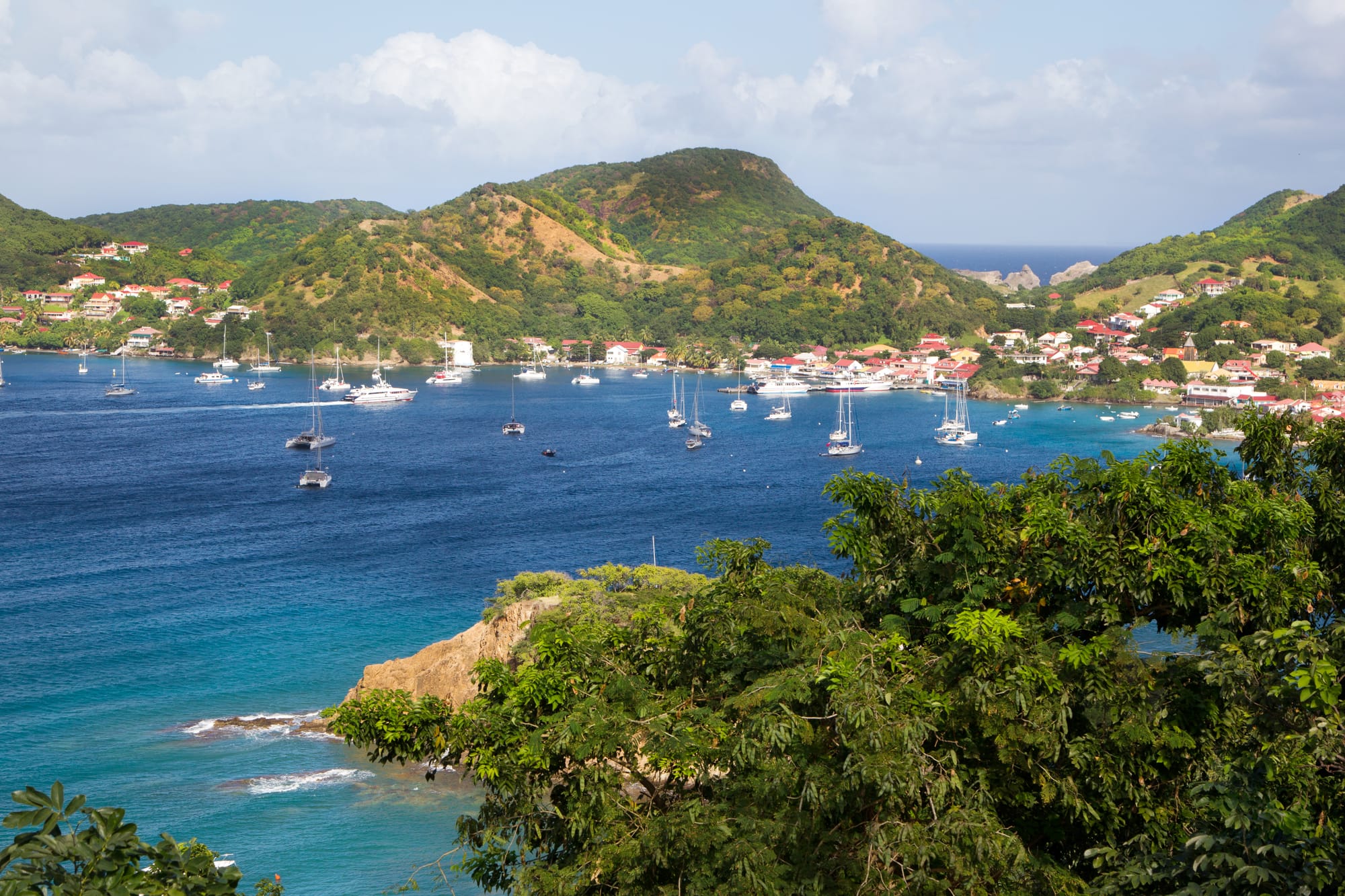Water lovers will be spoiled by the abundance of beaches in the north and south of the department; the one not to be missed, Les Salines, in Sainte-Anne, in the south of the archipelago, will enchant you with its turquoise water and countless coconut trees. Saint-Pierre, to the northwest, has one of the ►
Water lovers will be spoiled by the abundance of beaches in the north and south of the department; the one not to be missed, Les Salines, in Sainte-Anne, in the south of the archipelago, will enchant you with its turquoise water and countless coconut trees. Saint-Pierre, to the northwest, has one of the most beautiful beaches in Martinique, Anse Turin, with black sand; you can dive in one of the most abundant marine cemeteries in worldwide : fifteen shipwrecks sleep only a few meters from the shore following the eruption of Mount Pelee, at the beginning of the twentieth century. If you want to discover the magnificent aquatic fauna and flora, head to Anses d'Arlet, to the south, one of the most beautiful villages in Martinique; you can practice snorkeling and diving at Rocher du Diamant and Anse Noire, two trendy spots. Let yourself be tempted by the famous baptism of rum, a local specialty: a tasting in the sea on a "floating bar" at the Baignoire Joséphine, between the islet Thierry and the islet Oscar. For a relaxed atmosphere by the water, occupy your evenings in the beach bars and establishments open throughout the territory. It is possible to discover the whole island by practicing canyoning or a boat ride (with a skipper or independently) because it is rich in rivers and waterfalls, mainly in the north. Between December and April, live the unique experience of the tombolo phenomenon: the Atlantic Ocean opens, and you can cross it on foot to reach the islet Sainte-Marie, classified as a nature reserve but forbidden to swimming. If you get tired of sea bathing, it is possible to contemplate it by helicopter, through excursions along the west coast. Land activities are not to be outdone either: 250 km of hikes to be made through the tropical forest, where mangroves flourish; the Sainte-Anne ornithological reserve is also worth seeing, as it includes several rare species of seabirds, as well as one of the most important nesting grounds in the West Indies. Forty-eight small islands surround Martinique, some of which are protected, such as Madame and Chancel Islands, in the Bays of Robert and François; You will come across incredible animal and plant species to cover, such as iguanas. Do not hesitate to climb Mount Pelée in Saint-Pierre: its panorama is exceptional! You can walk down the city's only intact old street since the 1902 eruption. Further north, at Le Prêcheur,
immerse yourself in the heart of a tropical forest, heading for the Éron house, a former sugar factory, which has received the "Remarkable Garden" label: it is possible to observe the learning of cocoa work, and to savor it! On the Caravelle peninsula, classified as a nature reserve, on the Atlantic side, in La Trinité, discover the ruins of the "Château Dubuc," an agricultural estate built in the eighteenth century to house former settlers. If you have three hours ahead of you, climb to the volcanic summit of Morne Larcher by the sea. If you want some shade, the Balata Garden, in Fort-de-France, the capital of Martinique, is known to be the most beautiful green space in the area; a thousand plants and flowers await you, with your family, as well as its museum established in an old Creole house. For craft lovers: the village of La Poterie, in Trois-Îlets, offers daily art workshops in an old seventeenth-century building where Jesuits lived. Visitors of February, you will not be able to escape the inevitable Carnival: for five days, everyone is invited to dress up and sing the tunes of Martinique heritage. Want to taste the local specialties? Stroll along the stalls of the famous covered market of Fort-de-France (closed only on Sundays) or that of Lafcadio Hearn (open every day) in the same city, where you will find coconut water, cinnamon, or vanilla. In rainy weather, nothing is better than museums! "La Savane des esclaves" ("The Slave Savannah"), in Trois-Îlets, will answer all your questions about Martinique's history in a fun and educational way. The Franck Perret Museum in Saint-Pierre is a formidable witness to the explosion of Mount Pelee in the last century and will captivate archaeology buffs. The Saint-Louis Cathedral, with its unique architecture (Byzantine and Romanesque style), is to be discovered in Fort-de-France. Martinique rum is famous all over the world: go to the Habitation Clément, to the south-east, in Saint-François, as well as to the Beauséjour dwelling, to the north, in Grand'Rivière, to visit distilleries. Another activity, another place, Cap 110: a memorial in tribute to the victims of the slave trade, is not to be missed, at Anse Cafard. ◄
